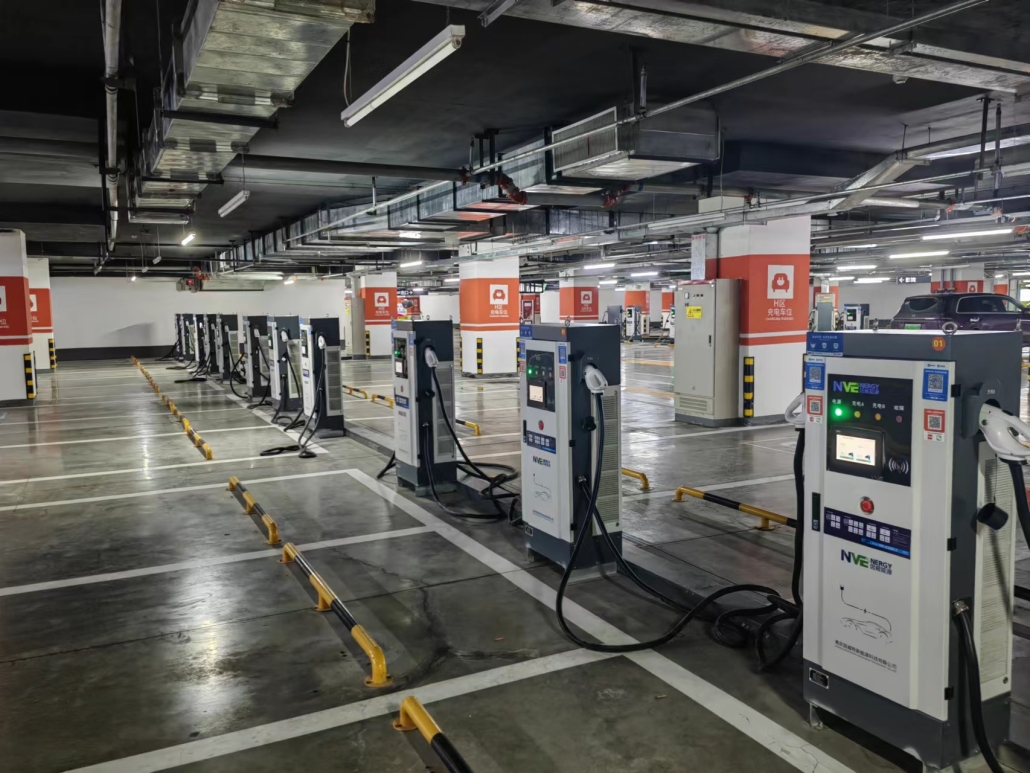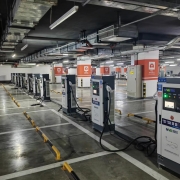EV charging station market worth US$76.31bn by 2032
The global EV charging station market is projected to grow from US$28.47bn in 2025 to US$76.31bn by 2032 at a CAGR of 15.1%, according to a new report by MarketsandMarkets.
EV charging infrastructure is rapidly expanding due to OEM-led investments by Tesla, Rivian, and Hyundai in proprietary networks. Public and private capital, including players like ChargePoint and BP Pulse, is accelerating fast-charging corridor and urban network deployment. Advancements in ultra-fast DC charging (150–350 kW) are aligning infrastructure with evolving EV capabilities.
Urban planning and smart city policies are integrating chargers into buildings and transit hubs. Additionally, fleet electrification and battery swapping in Asia are diversifying and strengthening charging access. Collectively, these factors are propelling the development and expansion of EV charging infrastructure, enabling broader EV adoption, and contributing to the establishment of a sustainable and future-ready transportation ecosystem.
Rapid adoption of NACS in the US is expected to accelerate demand for Tesla Superchargers, according to the report.

The growing adoption of the North American Charging Standard (NACS) across the US is expected to significantly boost demand for Tesla Superchargers. These chargers are engineered to support both AC and DC charging across diverse electrical systems, delivering up to 200 miles of range within approximately 15 minutes, positioning them among the most efficient charging solutions available.
Tesla operates a global network of over 55,000 Supercharging points, with ongoing expansion initiatives. Notably, accessibility is being enhanced through pilot programs such as the one in the Netherlands, which allows non-Tesla vehicles to use the network. Tesla also offers incentives such as 400 kWh of complimentary supercharging annually to Model S and Model X owners and periodically adjusts pricing to support infrastructure growth. Urban deployment strategies are optimized for user convenience. While the majority of North American EVs currently rely on the SAE J1772 connector, Tesla’s transition toward open standards such as NACS is aligning with a broader industry shift. Leading automakers, including General Motors, Ford, and Volkswagen, have entered strategic partnerships with Tesla to enable NACS compatibility across their EV lineups. In parallel, charging service providers are incorporating NACS connectors into their infrastructure, further reinforcing the standard’s momentum and positioning Tesla’s Supercharger network as a key enabler of the evolving EV ecosystem in North America.
By level of charging, Level 3 is expected to become the largest, with the growing need for fast-charging solutions.
Level 3 chargers support strong market potential due to several critical adoption drivers. Their ability to deliver rapid charging—providing up to 270 km of range in just 30 minutes or charging a battery to 80% in under 15 minutes—makes them essential for commercial applications such as taxis, ride-hailing services, and delivery fleets that require minimal downtime. They also enable long-distance EV travel, which broadens the appeal of electric vehicles beyond urban commuting. For users without reliable access to home charging, particularly in high-density urban areas, Level 3 chargers offer a practical solution. Despite their high cost (~USD 30,000 or above per charger), their deployment already accounts for around 52% of global chargers, reflecting growing infrastructure readiness and institutional investment. This combination of functional necessity, user convenience, and increasing installation base underpins the expanding market potential for Level 3 chargers.
Europe is projected to be the second-largest market during the forecast period of 2025 to 2032.
Europe has implemented stringent emission regulation standards to reduce the rising emission levels. Several CPOs in the region are deploying their EV charging infrastructure in support of government policies. For instance, in April 2025, IONITY GmbH announced the installation of 500 new ultra-fast 350 kW chargers along major highways across Europe. This effort supports the EU’s AFIR policy, which aims to make EV charging more accessible and standardized across all member states. This expansion makes long-distance travel by electric vehicle much easier and faster. It also helps create a consistent charging experience across borders, encouraging more people to switch to electric mobility.
The demand for EV charging stations has increased significantly due to the focus on zero- or low-emission vehicles. Also, the region is home to leading EV charging station providers and charge point operators such as Schneider Electric (France), ABB (Switzerland), Siemens (Germany), Efacec (Portugal), Shell (UK), Total Energies (France), Iberdrola (Spain), EVBox (Netherlands), Allego (UK), and Enel X (Italy), among others. Countries in the region have been working to develop their EV charging infrastructure. For instance, the UK announced plans to phase out petrol/diesel-based vehicles by 2035. Other European countries have implemented strategies for the transition to EVs during the past decade. For instance, in May 2025, the European Commission approved funding for 40 new “Green Highways” across Europe’s main transport routes. These corridors will include both electric charging and hydrogen refueling stations, along with services for rest and logistics. By integrating different types of clean energy refueling, the EU is supporting both electric cars and trucks. These supercharger corridors are a big step toward making long-distance, zero-emission transport more practical across Europe.




Leave a Reply
Want to join the discussion?Feel free to contribute!